|
@EMOTIONTHEORY
|
 |
« on: May 02, 2016, 08:44:45 PM » |
|
Hello TIGSourcers! I'm really happy to be sharing the game I'm working on; Seed of Life. I hope to keep this devlog up to date as I explore the game further and narrow in on its completion. For anyone interested in a possible beta or demo, just hit me up on any of my channels or ask here! I have kept a fuller devblog on Tumblr if you wish to see the game's development history. Website | Tumblr | Twitter | Facebook | YouTube | Twitch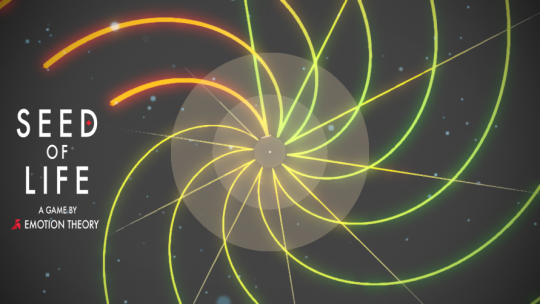 Seed of Life is a meditative game in which you deflect colourful elements to create sacred patterns. Seed of Life is a meditative game in which you deflect colourful elements to create sacred patterns. Protect the Seed of Life in the center from incoming elements by rotating a paddle on a circular canvas. Deflecting elements will fill the sky with a dance of colors that form sacred geometrical patterns, but stay vigilant; as elements move and behave in ways that will surprise and challenge you. With hundreds of unique and dazzling compositions, Seed of Life offers a meditative experience of joy and comprehension through its real-time puzzle gameplay, and atmospheric visual and aural feedback designed to deeply immerse you in a variety of themes and ideas.  Key Features Key Features- A beautiful and immersive experience designed to stimulate your visual and aural senses.
- Hundreds of unique visual compositions that reward continuous and skillful play.
- A dynamic, evocative soundtrack that responds to your input and heightens alongside the game.
- Test your skill and dexterity by getting a high score in Endless mode, or try to beat all 100 levels in Challenge mode.
- Zen mode lets you play continuously - dynamically adjusting the waves you face to maintain an immersive sense of flow.
 Platforms & Release DateThe game has been greenlit on Steam! Platforms & Release DateThe game has been greenlit on Steam! I am currently targeting PC, Mac, & Linux for a Late 2016 release. Additional platforms are being considered for the future. 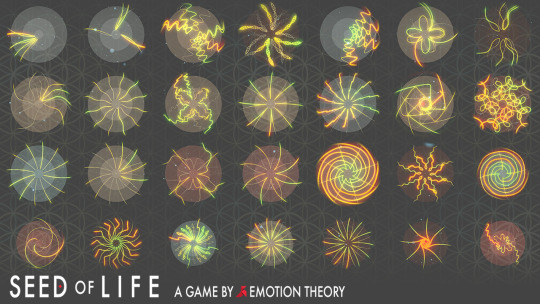 Additional Links:I wrote an auto Time Tracker tool in Unity to help me keep track of my dev time. I actually put it up on the Unity Asset Store, so it's available to anybody who might be interested.I wrote a Level Generator to help me make hundreds of different levels, layouts, projectiles, and compositions.I wrote a Screenshot Tool that can automatically take screenshots of each level that's completed. This helps me keep track of various levels - to see which ones were completed and which might've been too difficult.I also wrote an auto Twitter Poster. This lets me automatically tweet any screenshots taken while I play the game.I also wrote an AI that can play the game automatically. This lets me stream the game without having to play it. Together with the other tools I wrote, the game can also take screenshots and tweet them (with a link to the stream) which really makes it easy to stream and chat and tweet all simultaneously.With this AI, I did a 3+ hour long stream that's been archived to YouTube. Here is a playlist of that stream split up into smaller videos.About me: Additional Links:I wrote an auto Time Tracker tool in Unity to help me keep track of my dev time. I actually put it up on the Unity Asset Store, so it's available to anybody who might be interested.I wrote a Level Generator to help me make hundreds of different levels, layouts, projectiles, and compositions.I wrote a Screenshot Tool that can automatically take screenshots of each level that's completed. This helps me keep track of various levels - to see which ones were completed and which might've been too difficult.I also wrote an auto Twitter Poster. This lets me automatically tweet any screenshots taken while I play the game.I also wrote an AI that can play the game automatically. This lets me stream the game without having to play it. Together with the other tools I wrote, the game can also take screenshots and tweet them (with a link to the stream) which really makes it easy to stream and chat and tweet all simultaneously.With this AI, I did a 3+ hour long stream that's been archived to YouTube. Here is a playlist of that stream split up into smaller videos.About me:I'm Adam Thompson and Emotion Theory is my indie game studio based in Auckland, New Zealand which I run independently. I am interested in the creation of beautiful, emotive, meaningful, fun, and accessible interactive experiences. Channel Links:Website | Tumblr | Twitter | Facebook | YouTube | Twitch | Email |
|
|
|
« Last Edit: May 14, 2016, 04:04:52 PM by @EMOTIONTHEORY »
|
 Logged
Logged
|
|
|
|
|
Impmaster
|
 |
« Reply #1 on: May 03, 2016, 12:10:47 AM » |
|
Wow you seem like a super skilled programmer. Aren't you afraid people will think you ripped your logo off of Heavy Rain?
|
|
|
|
|
 Logged
Logged
|
|
|
|
|
@EMOTIONTHEORY
|
 |
« Reply #2 on: May 03, 2016, 02:40:40 AM » |
|
Yeah it's definitely a nod to Heavy Rain. I don't mind people making the association - as long as they're not cynical, maybe they'll associate it with 'emotive experience'. Maybe I'm naive but I don't think it's a big deal  it's just an origami, after all. Thanks for the compliment. It's tough and I kind of stumbled on those solutions by accident. In the end it works out though since I don't have a team and so I need to try and do things efficiently. |
|
|
|
|
 Logged
Logged
|
|
|
|
|
sidbarnhoorn
|
 |
« Reply #3 on: May 03, 2016, 04:17:17 AM » |
|
This looks very interesting. Looking forward to seeing it develop!
|
|
|
|
|
 Logged
Logged
|
|
|
|
|
@EMOTIONTHEORY
|
 |
« Reply #4 on: May 04, 2016, 04:59:44 PM » |
|
UPDATE 1
Demo mode, playtesting, and getting game feedbackMay 5, 2016 This isn’t technically “update 1″, but since I’ve rebranded my game to Seed of Life (formerly known as Super Shield), I thought it fitting to start counting from scratch. So - welcome to the first official development update for Seed of Life. Here’s what took place and what I achieved on May the 4th. DEMO ModeThis mode is intended for showcasing the game at meetups and conventions and such. If anybody stops playing for 10 seconds, an overlay with the controls is displayed while the AI takes over and plays by itself. I find this a necessity now that I have it in place. It’s important for the game to be in motion and to look interesting and inviting at all times - particularly when nobody is playing it. 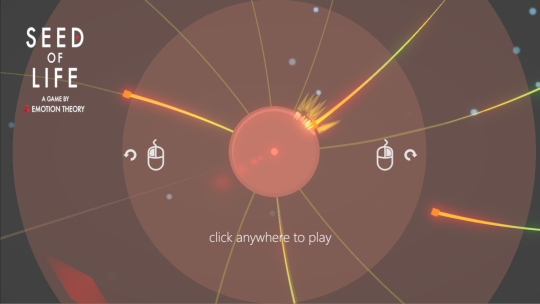 Auckland Game Developers Meetup (May) Auckland Game Developers Meetup (May)I attended the May Auckland game developers meetup at AUT.I caught up with many friends and fellow developers. It was a warm experience to see many of them and speak enthusiastically about various projects and going-ons. I had a wonderfully long chat with Jerome Kelsey, a friend and former colleague of mine, about the possibility space of the game. I demoed the game on the show floor. There were some great people who tried the game - an overall positive experience. Screenshots from the play session were tweeted out directly from the game to my twitter, which you can browse through here (@EmotionTheory) The Arcade / Idea Collective at the MOTAT The Arcade / Idea Collective at the MOTATMade my first visit to The Arcade / Idea Collective at the MOTAT (Museum of Transport And Technology). I had a very candid talk with Joe Chang, the lead behind horror game Phantasmal. He gave some insight into his experiences and also provided some very helpful feedback for my pitching efforts with Seed of Life. The workspace was great and the people are a great bunch to be around. I’m strongly considering making the trip over once a week, when possible. Steam store page feedbackI recently posted my Steam store page description for Seed of Life.This was the first draft and was posted for feedback, which I had requested from a few of my game dev friends on twitter. TIGSourceI began a development blog on TIGSource. I’ll hopefully be posting to both TIGSource & Tumblr from here on. Learning OutcomesPitching and General FeedbackSome feedback given by Joe for pitching Seed of Life: - Make specific references to games. For eg. Mini metro - success with niche market explosion, minimalism. Polybridge - success with gif sharing explosion + social sharing
- Compare to market & projected sales - consider numbers for each demographics + percentage of people potentially interested (conversion rate) + real data of steam players, market numbers, platform numbers, etc
- Promotion - some specificity (name specific streamers / YouTubers, etc)
- Practice public speaking - communication, story-telling,
- Write an overview / summary + conclusion at the end
Some additional feedback from other respected devs: - Stephen:
- You probably don't have to say/write "abstract minimalist" as the visuals show that really clearly. (ie, you can save a few words in your word count) The screenshots, in this case, do a great job of conveying the gameplay.
- Not sure about the word "meditative". Some people might find this offputting or interpret it as slow / dull. The elegant, minimalist elements are already obvious visually.
- Chris:
- I don’t think that most people will understand what you mean by shield. Paddle might be clearer.
- Suggestion: Maybe something along the lines of “Deflected bullets light up the screen with the sky with dazzling patterns” would sound better. From what I’ve seen, intricate doesn’t seem like the right word.Platforms - I think it would be better to target only a few at a time and to not list any platforms that you aren’t absolutely sure you’ll release on. That way you don’t disappoint anyone if you don’t release on that platform and you also have a separate ‘announce-able’ when you do.
- Ken:
- The compression on the gifs is a bit unfortunate. (Make sure they’re played at the original size and not blown up, or consider vines)
- Elevator pitch has the words 'action' and 'bullet'... would be nice to avoid those if possible. It's at odds with 'sacred' and meditative'.
- Suggestion: "The player is the protector of a sacred seed. Reflecting harmful elements creates a dance of light, a sacred pattern"
- It’s good to suggest a story
- Jordan:
- I like the new direction, before I think it felt a lot shallower than your other projects in terms of the concept but where you are headed now makes it seem like an Emotion Theory game. Has the new name inspired any big changes to the design? A thought I have is that it currently looks like laser light show more than it does something natural or energy like. The name coupled with the aesthetic makes me think of the life stream in ff7 or energy veins on a spiritual plane. If this is the case it would be cool to have more organic, spiralling, flowing, plant-like movements and imagery - a symptom of the old design to me is that it is very synthetic and trance-y. Not that it doesn’t fit only something to potentially keep in mind going forward. Have you thought about more diverse color palettes and background imagery? A minor promo comment is that a lot of screenshots together look quite samey when you don’t know he context and understand that these different designs also come with heavy gameplay implications.
Possibility SpaceMy discussion with Jerome lead to us exploring these points: - Having a striking opening sequence. When players first experience the game, they play through a very easy and simple wave that forms the titular Seed of Life pattern - after which the logo of the game displays, and cue the epic music.
- A mode where projectiles can be directed left or right based on where on the paddle you deflect it. The objective would be to purposefully paint deliberate patterns that are dimmed on the screen. There could be a digital granularity on the paddle - 1 / 3 / 5 sections - where each section will direct it by a certain degree. The difficulty could be dialed right down to cater for this added level of complexity. Players might be content simply making their own patterns as they play the game - a Free Mode, which will also be what I’d use to explore level / pattern design.
- Having more sacred geometry inspired patterns. There could be geometrical components that form parts of a complicated image. These components can be turned on when bullets pass through them, making something like this sacred geometry image possible. This is a more complex idea which I might need to come back to later.
PlaytestingSome notes from playtesting: - Bring a controller next time
- People were playing a test mode that literally fed them any of the thousand levels that were generated. Some were good, some were awful, and some were extremely difficult. A milestone I need to reach for next month: Curate levels by difficulty and get Zen mode working properly. An easy and endless “Free Mode” with no objective might be nice, too... (a *real* Zen mode)
- Figure out how to get audio to work through an HDMI cable on a Mac (embarrassed to admit this one, but I couldn’t get it to work)
Some positive notes: - People thought it was pretty, which was nice to hear.
- DEMO Mode was brilliant for when people were initially passing by
- I told players about the game tweeting the patterns they were getting, which got them to check out my twitter.
ConclusionIt was a great day, overall. I’m pumped to finish up my store page and pitch for Seed of Life as well as curate and make more and easier levels. There’s also a Free Mode I’d like to explore where players get an endless wave of easy projectiles they can manipulate with the way they hit it (middle, left, right of the paddle). LinksWebsite | Tumblr | Twitter | Facebook | YouTube | Twitch | Email
|
|
|
|
« Last Edit: May 15, 2016, 02:10:16 PM by @EMOTIONTHEORY »
|
 Logged
Logged
|
|
|
|
|
@EMOTIONTHEORY
|
 |
« Reply #5 on: May 14, 2016, 12:25:14 AM » |
|
UPDATE 2
Level creation process for Challenge modeMay 13, 2016 I’m trying to narrow down the final level count on Challenge mode. This is the only mode right now I’m confident in. The other two modes need a bit of reworking - which I’ll explore in my next update. For now, here’s what I need to do to finish Challenge mode for Seed of Life. Challenge ModeChallenge mode has fixed level compositions that escalate in difficulty. The goal of each level is to successfully deflect all incoming elements, thus forming a unique pattern. Missing an element will rewind the wave to the beginning. It is very much inspired by the game Duet, where beating a level requires complete mastery over that level. 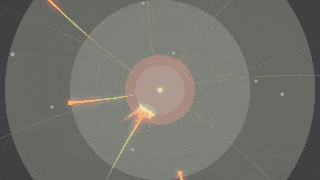 For this mode, I need to create/curate 50-100 levels that: - Have amazing looking patterns
- Utilise each of the game’s projectile types / properties / mechanics in roughly equal measure
- Are arranged by difficulty, with a steady introduction of said mechanics
I’ve generated almost a thousand levels with my level generator, and there were some very striking looking patterns that came about from this. Due to the way the generator works, these won’t satisfy the 2nd point, and the 3rd point is difficult for the system to really quantify (there ARE ways to measure a level’s difficulty, but it’s only an estimate and really requires human input to gauge properly). So, I figured the first step to getting through this huge amount of content I needed was to cherry pick the best-looking patterns from the level generator. Thanks to the 3+ hour stream on Twitch I did not too long back where an AI played through all of my generated levels - and that the game is programmed to take automatic screenshots at the end of each level - my screenshots folder was full of levels ripe for the taking. So was my twitter, thanks to the auto-twitter poster I had in there too. 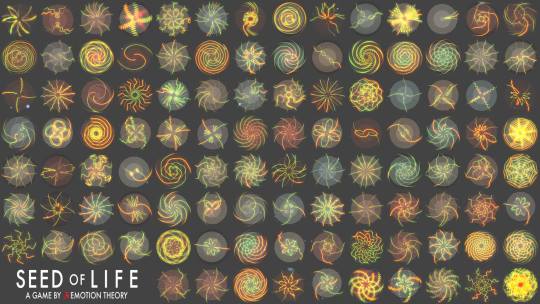 For step two, I had to manually play through these 100 chosen levels. Prior, I would have a bot I wrote play through them so I could collect screenshots and data such as time taken. It could obviously not collect data for how long a human would actually take to beat it and the number of attempts to do so - so playing it myself was a necessary step. I quickly arranged my levels by these two metrics, and thus came up with a rough order of difficulty. In addition, I would have other users play the game and gather their data to see how things might be adjusted slightly. The final step would see me attempt to satisfy the 2nd point noted above. For this, I would need to: - Tailor the level generator to create levels specifically with projectile behaviours that are under-represented, and then repeat the above process of cherry picking them.
- Manually come up with waves that utilise said projectile behaviours.
This needs a few iterations of level generating, level creating, playtesting, ordering levels around, cutting levels, and repeat. In doing this, I would eventually complete the final level count for Challenge mode. SummaryI’m completely happy with the way things work for this mode. The structure and content type is completely locked in, and my only concern for it is to ensure the levels play well, steadily introduce mechanics, and end with a beautiful and satisfactory pattern.My biggest concerns come with the other modes - but that will be for another update!
|
|
|
|
« Last Edit: May 15, 2016, 02:00:52 PM by @EMOTIONTHEORY »
|
 Logged
Logged
|
|
|
|
|
@EMOTIONTHEORY
|
 |
« Reply #6 on: May 15, 2016, 01:52:27 PM » |
|
UPDATE 3
Making the default game mode inviting and easy to enjoyMay 16, 2016 I’ve been mulling over how I’m going to handle the rest of the game’s development. I’ll be honest - as much as I thought I had a plan, there are still so many unanswered questions and design problems that need attention. The idea was for all of the game’s modes to kind of channel from each other. I would create levels that would be present in all game modes, but in different contexts. This mostly seemed OK, but I’ll get to why I think this is a problem for the default game mode at least. Story mode (default play mode)For the default play mode, I wanted to be in line with some other beautiful games that share similar aesthetic and emotive sensibilities. Two games I’ve been inspired by are Entwined and Flower - though I’ll mainly be talking about the latter. Flower isn’t exactly comparable to Seed of Life mechanically, but it does share a similar goal. Playing the game is easy and simple - anybody can pick the controller up and immediately play any level. There are goals, but you needn’t be concerned with them if you don’t wish. Simply playing the game yields in wonderful sights and delightful sounds. There is a joy in wielding the controller and simply participating. Onlookers too feel a similar joy even though they’re merely watching. All in all, it’s a beautiful experience made for everybody, one that stimulates emotionally through its audio and its visuals. Such a work of art is a great thing to aspire to - but is much easier said than done. One of the criticisms of Flower is that despite putting the calm sensation of flying around as the forefront of the experience, the game can sometimes run counter to this in the representation of its goals. In the game, you are meant to collect flower petals that continue to open up the level until you reach its conclusion. Petals can at times be placed in awkward patterns that make it difficult to collect in a single swoop, thus necessitating the user to halt, turn around, and attempt to collect them in a second or third swoop. This can be an irritating and frustrating experience that works against the natural and easy pacing the game is best played at. At its worst, Flower feels like an outdoors nature-inspired checkpoint race. The selling point indeed is not to come first, but to simply enjoy the ride. Only, as a checkpoint race, missing a checkpoint means you need to slow down, turn around, grab the checkpoint you missed, and then turn around once more to continue the race. You could easily choose not to turn around. You could carry on, wait for the next “lap” before you collect what you missed. You could even choose to forget the checkpoints altogether if it proves frustrating to you. In other words, the choice to play the game in a way where you, the player, receives the most satisfaction and joy, is completely in your own hands. But many of us gamers aren’t so confident in taking our own path. Many of us are the type that play with the lights off, headphones on, and eager to immerse ourselves in an experience that feels tailored for us. We instead take confidence in the designer, knowing and anticipating a well-made experience meant to be played a certain way. We do as expected of us in hopes of witnessing the strange and beautiful things that the game wishes us to witness. I feel that the issue of Seed of Life is that it has this similar fault - perhaps seemingly harmless to most, seeing the overall positive reception of Flower - but multiplied to a great degree. If the goal of the game - from my end as the designer - is to provide a calm, meditative, and easy-to-pick-up experience of showcasing these striking patterns, then shouldn’t there be as little resistance as possible to that intention? Challenge mode itself works great because, as the name implies, the mode is intended to provide a challenge. The striking patterns you end up creating by being a skilled player is merely the result, the reward, of your accomplishments. This mode’s target audience is intended for those who take an interest in the strange and surprising way the elements move and behave, and wish to participate in challenges that highlight their mastery of them. As such, Challenge mode succeeds in its design goals. In contrast, Story mode is intended for everybody who takes an appreciation in the beauty and variety of patterns generated by the game. The type of people I’m trying to draw in are the type that might see screenshots or videos and think the game looks pretty and interesting. Picking up and playing the game should hold their interest for the longest time possible and deliver on the promise that the marketing of the game shows. Right now, Story mode is designed to work similarly to the game Entwined.In Entwined, collecting the orbs will increase the bars at the top - when they’re filled up, the level ends with an epic finale. Missing the coloured shards, however, will damage and lower the bars at the top. Seed of Life’s Story mode plays very similarly to this. It is divided into chapters, where each chapter is comprised multiple sections. Each section will throw a variety of randomly chosen waves at you. When you successfully deflect lots of elements, you’ll level up to the next section, which might introduce new element behaviours or up the difficulty of the waves slightly. If you manage to miss a lot of elements, you’ll level down to the previous section. In other words, the game only progresses when the player feels comfortable enough with what they’re playing. This dynamic difficulty is at the heart of Story mode and ensures the player is experiencing flow; the sensation of optimal difficulty and joy.  Another proposed bonus game mode - Zen mode - is intended to play like this, but endlessly. Each chapter in Story mode ends in a finale, giving the player an implicit goal, whether or not they choose to actively pursue it. Here are the main problems I find with Seed of Life's Story mode: - Despite there being no real consequence for missing a projectile, using waves from Challenge mode will likely keep the pacing frantic and anxiety-inducing.
- This may not be a bad thing. Missing elements do not hold the same consequence, and thus players will constantly progress, whether they miss some elements or not. (My intuition tells me that this line of thinking will prove wrong, however, and that something should in fact be done to tone the overall difficulty down… I should confirm this and gauge player feedback through user testing).
- These levels could potentially be recycled but repurposed for this mode. Some could be slowed down, for example.
- They could be completely repurposed or recreated entirely. In other words, new levels would simply take “inspiration” from the Challenge mode levels. That way, I can ensure a comforting difficulty level throughout (This will require a lot of additional and unnecessary work).
- The levels could be played at a lower base speed from those in Challenge mode. Leveling down could also lower the speed by a factor each time (I think THIS might be a really strong solution, and will aim to test it).
- Missing a projectile won’t get deflected and thus will not form the final pattern of the wave, meaning players who miss frequently won’t be getting the full visual experience.
- This may not be a bad thing. You still get visual variety, and it rewards players for playing well, which may be seen as a motivator for doing well (in addition to progressing the chapter).
- I could potentially make all elements deflect, whether you hit them or not. These would still count as “misses” and enough of them would still level you down, but this way the game consistently renders patterns appropriately. Maybe missed elements could render as a different colour, which would still provide an additional motivating factor to perform better. (I really think THIS should be how Zen mode functions, and not this mode...).
- Missed projectiles could be re-served to the player once the wave ends, giving them the opportunity to hit them back and complete the pattern. Continually missing these, however, would still “level down” the player. (I think THIS might be a really strong solution, and will aim to test it).
- Challenge mode utilising the same levels might feel a little repetitive to those that choose to play it.
- This may not be a bad thing. After all, the focus of Challenge mode is to challenge by way of complete mastery. Where Story mode might give you such patterns in a safer and more playful context, Challenge mode will serve them to you with the goal being not to miss a single incoming element.
- Again, repurposing or creating entirely new levels for Story mode will mitigate this problem.
- I feel it important to add “introductory” levels for each Section and Chapter, with additional “inbetweener” levels. These will be more concerned with gameplay than visuals. They may actually blend into the background as opposed to highlight and showcase a unique pattern. By adding these, not only will it serve to add additional flavour to the pacing of Story mode, but will also allow Challenge mode to feel like its own thing, offering only the unique “set-pieces” encountered in Story mode. (I think THIS might be a really strong solution, and will aim to test it).
SummaryThere are some definite design problems that need to be addressed in Seed of Life. It’s clear to me now why studios like thatgamecompany or ustwo take the time they do to produce games such as Flower, Monument Valley, and Land’s End. It’s an explorative kind of game development when you try doing something that’s unique and hasn’t really been done before while strongly focusing on user experience - an ambition that inevitably takes several iterations and playtests to get right. It’s also clear to me that Seed of Life needs some further focus testing to help narrow in on the solutions to these problems. For the time being, here’s a list of the strongest solutions I’ve explored for Story mode (in relation to Challenge mode): - Levels could be played at a lower base speed from those in Challenge mode. “Leveling down” could also lower the speed by a factor each time.
- Missed projectiles could be re-served to the player once the wave ends, giving them the opportunity to hit them back and complete the pattern. Continually missing these, however, would still “level down” the player.
- Add “introductory” levels for each Section and Chapter, with additional “inbetweener” levels. These will be more concerned with gameplay than visuals. They may actually blend into the background as opposed to highlight and showcase a unique pattern.
Solving these problems would put me at ease. I believe they might also solve the same issues I have with Score Attack mode - which I’ll talk about in my next update.
|
|
|
|
|
 Logged
Logged
|
|
|
|
|
@EMOTIONTHEORY
|
 |
« Reply #7 on: May 21, 2016, 11:32:30 PM » |
|
UPDATE 4
Menus and User Experience22 May, 2016 I’ve been working on the game’s presentation and menus; what the player sees when they first switch on the game, how the start screen looks, how they move between pages, and so on. Some rules I’ve kept in mind: - The very first time the player starts the game, they will automatically begin playing a short tutorial that then progresses onto Story Mode, without navigating any menus.
- User-interface should be compatible with Mouse, Controller, and Touch. This is to maximise compatibility across multiple platforms.
- Minimalist button prompts should appear on the screen (or should they?)
- No important rollover states (touch screens don’t have them)
- Buttons should feel natural and touchable/clickable.
- Utilise as little text as possible.
- Minimal localisation.
- Maintain a minimalist aesthetic.
- Design to be visually intuitive.
- Don’t over clutter the screen + maintain good spacing between elements.
Here are the different menu screens you can navigate through. Opening splash screen(s)This is not something I’ve done yet, but some possible elements could include: - Unity logo
- Emotion Theory logo / a game by Adam Thompson
- This game saves data automatically.
- Best played with headphones.
Start screenA simple screen the player should engage with before they continue. Leaving the game on this screen could enable the game to play itself - a demo mode. - Press any button / Press any key / Click anywhere / Touch anywhere.
 At first I felt there was too much text, so I chose to replace the “Press Any Button” text with iconsHere’s a revised edition with unique icons for each input / platform: At first I felt there was too much text, so I chose to replace the “Press Any Button” text with iconsHere’s a revised edition with unique icons for each input / platform: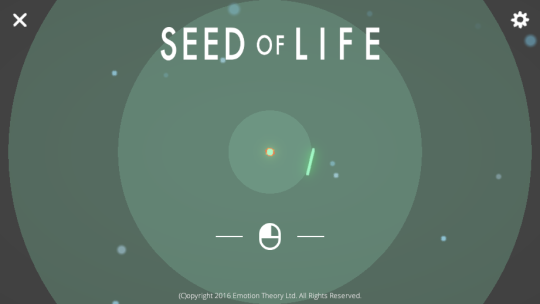 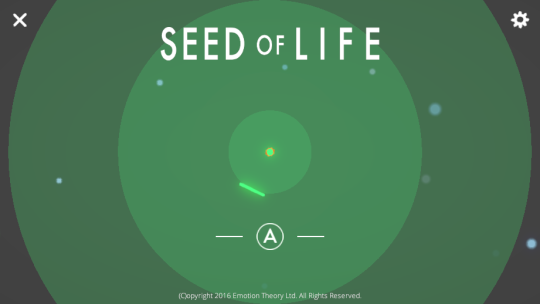 Mode Select / Main Menu Mode Select / Main MenuOnce you’re in the game, you select the mode you’d like to play. - Story - Chapter Select (paginated)
- Endless - Difficulty Select (paginated)
- Challenge - Set Select (paginated)
- Zen - Play
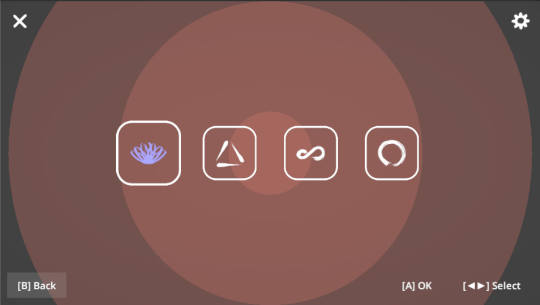 At first I kept the game’s title in the screen, but it felt it was unnecessarily obstructive at this point in the menu. Immediately I felt that the button prompts at the bottom could utilise icons rather than text. At first I kept the game’s title in the screen, but it felt it was unnecessarily obstructive at this point in the menu. Immediately I felt that the button prompts at the bottom could utilise icons rather than text.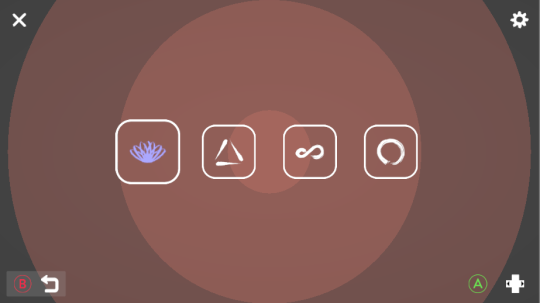 The B button feels appropriate using an icon for “Back”. However, pairing up A and the Arrows with icons for “OK” and “Select” felt strange. Alternatively, I opted to leave them without any icons, since I believed it felt intuitive enough that they reprsent navigation and confirmation. I still felt there was a strange disconnect and that there could still be a better way. The B button feels appropriate using an icon for “Back”. However, pairing up A and the Arrows with icons for “OK” and “Select” felt strange. Alternatively, I opted to leave them without any icons, since I believed it felt intuitive enough that they reprsent navigation and confirmation. I still felt there was a strange disconnect and that there could still be a better way.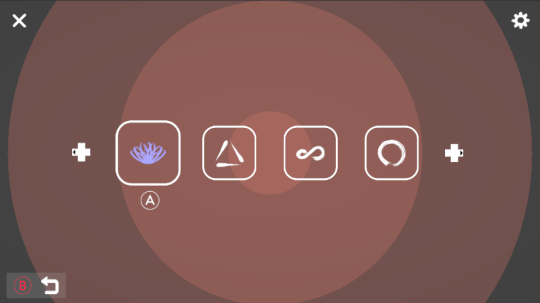 The arrows appearing on the sides was a step in the right direction, but I still felt they took up an unnecessary amount of screenspace given their innately intuitive and obvious functions. The arrows appearing on the sides was a step in the right direction, but I still felt they took up an unnecessary amount of screenspace given their innately intuitive and obvious functions. I strongly feel this solution is the right way to go. It communicates the function yet does not feel overly obstrusive or visually verbose.Some may forego this attention to detail given how obvious these functions seem to be. Yet still, even without playtesting this, I know from experience how players at times can completely miss a menu function if it is not explicity offered or displayed to them, even if it is as simple as the functions seen above.Some additional thoughts / notes: I strongly feel this solution is the right way to go. It communicates the function yet does not feel overly obstrusive or visually verbose.Some may forego this attention to detail given how obvious these functions seem to be. Yet still, even without playtesting this, I know from experience how players at times can completely miss a menu function if it is not explicity offered or displayed to them, even if it is as simple as the functions seen above.Some additional thoughts / notes:- Icon designs should be revised.
- Story mode icon could maybe use a simpler lotus made of three strokes, or a different icon entirely.
- Challenge mode (triangle) could instead be a 3x3 grid of painted dots - symbolising the multitude of waves you can pick and play.
- I’m happy with the icons for Endless and Zen mode since they both accurately represent their respective concepts.
- An alternative display would be to have pages where each mode encompass the entire display. Not sure I like this as much, though.
- Maybe the Story Mode icon (leftmost) could be bigger and more pronounced. My problem is when players return to the game to continue their progress in Story Mode and see this menu - since there are no words - they won’t likely know that it’s the leftmost icon that is Story Mode, the mode they’ve been playing...
- This could be countered by locking the other modes initially. The icons could play an “unlock” animation when they are first unlocked.
- Story Mode could possibly benefit with a Continue button somewhere... then again, it will always load up on the most recent chapter, so this is not likely a problem.
Level SelectWhen you’ve selected a mode, you will be presented with a Level Select screen. This is a paginated view with a single selection taking up the whole screen (eg. Chapter I, Chapter II... etc). For Story mode, you will select the chapter. For Endless, the difficulty - and so on. - Circles at the bottom representing page number
- Arrows on the sides to navigate pages
- Play Button
- Level display
Story Mode Functionally, this concept feels right. You will switch pages, and each page represents a chapter. You can play the chapter by pressing A from its page. I think that each page will need some kind of embelishment, as well as possibly some meta data for each chapter, such as Best Score and what not, similar to Endless Mode.I’m using roman numerals for each chapter number, which fits the language agnostic approach (sort of). I’m not sure about the font used though, which has more of a brush stroke feel.In general, I’m beginning to see a mix of zen/brush type design along with flat minimalism. I’m not sure if the two work together and whether or not I should stick to one style - and if so, which style to choose.Challenge Mode Functionally, this concept feels right. You will switch pages, and each page represents a chapter. You can play the chapter by pressing A from its page. I think that each page will need some kind of embelishment, as well as possibly some meta data for each chapter, such as Best Score and what not, similar to Endless Mode.I’m using roman numerals for each chapter number, which fits the language agnostic approach (sort of). I’m not sure about the font used though, which has more of a brush stroke feel.In general, I’m beginning to see a mix of zen/brush type design along with flat minimalism. I’m not sure if the two work together and whether or not I should stick to one style - and if so, which style to choose.Challenge Mode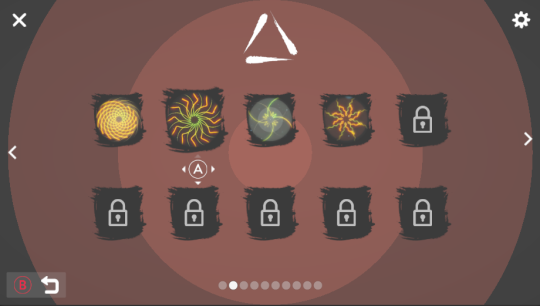 Immediately I could see that the navigation felt a little cluttered, particularly since now we’ve added up/down arrows to it.I pondered whether it was necessary at all. Should I keep them on the main menu but omit them in the mode sub menus? Would this be considered inconsistent and thus confusing? By this point players should know to use the arrows for navigation, so perhaps it will make sense? Or should I omit them from *all* menus?I’m not sure what the solution is, but for this menu specifically, I tried it without the arrows and it feels much less cluttered. Immediately I could see that the navigation felt a little cluttered, particularly since now we’ve added up/down arrows to it.I pondered whether it was necessary at all. Should I keep them on the main menu but omit them in the mode sub menus? Would this be considered inconsistent and thus confusing? By this point players should know to use the arrows for navigation, so perhaps it will make sense? Or should I omit them from *all* menus?I’m not sure what the solution is, but for this menu specifically, I tried it without the arrows and it feels much less cluttered. I feel this is close, but I might get further opinions before settling on a final design. Endless Mode I feel this is close, but I might get further opinions before settling on a final design. Endless Mode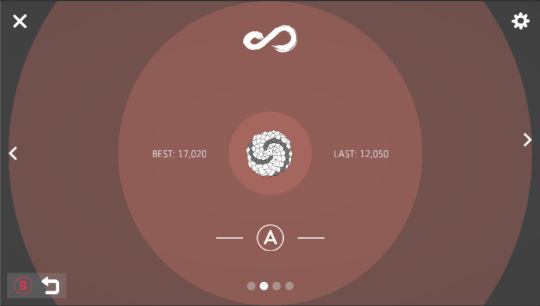 Endless mode is a case where I’m OK with using text. This is for the “Best” and the “Last” labels as well as the scores you got. It’s quite possible to use a BEST icon (such as a scoring medal or a star) and a LAST or RECENT icon (such as a clock?). Animation could really drive home these concepts. When you finish a game, your score can flash and tween into the LAST position, reinforcing the fact that this is your most recent score of the game you just played. Same deal with BEST; beating your own high score will place it into that slot too, emphasising the fact that you’ve just made your personal best score. Endless mode is a case where I’m OK with using text. This is for the “Best” and the “Last” labels as well as the scores you got. It’s quite possible to use a BEST icon (such as a scoring medal or a star) and a LAST or RECENT icon (such as a clock?). Animation could really drive home these concepts. When you finish a game, your score can flash and tween into the LAST position, reinforcing the fact that this is your most recent score of the game you just played. Same deal with BEST; beating your own high score will place it into that slot too, emphasising the fact that you’ve just made your personal best score.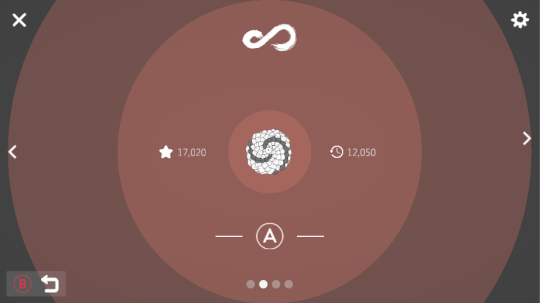 I feel the icons actually work quite well. For the BEST icon, we could instead use a badge or a winner’s up icon. Thoughts?Lastly, there’re the icons representing the difficulty levels. It was tough thinking of what could work, but what I’ve got - and what I think is really interesting - is a fibonacci spiral on a pinecone. Each difficulty adds another spiral, up to a total of four. This fits the game’s theme perfectly and is a pleasant looking image. Of course, what’s in the image above, as with all images, is just a blueprint with a placeholder graphic. This will be reconstructed suitably.Zen Mode I feel the icons actually work quite well. For the BEST icon, we could instead use a badge or a winner’s up icon. Thoughts?Lastly, there’re the icons representing the difficulty levels. It was tough thinking of what could work, but what I’ve got - and what I think is really interesting - is a fibonacci spiral on a pinecone. Each difficulty adds another spiral, up to a total of four. This fits the game’s theme perfectly and is a pleasant looking image. Of course, what’s in the image above, as with all images, is just a blueprint with a placeholder graphic. This will be reconstructed suitably.Zen Mode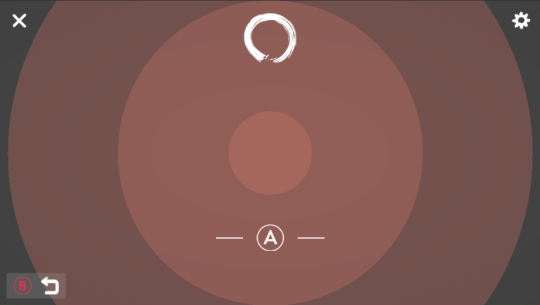 There’s nothing to really display here except a Play button. Maybe there could be different types of Zen modes, but I think that’s overcomplicating things. I really feel tempted to put the Zen icon in the center... but that doesn’t really make sense. Should Zen mode play instantly when you select it from the main menu, rather than enter this sub menu?Summary There’s nothing to really display here except a Play button. Maybe there could be different types of Zen modes, but I think that’s overcomplicating things. I really feel tempted to put the Zen icon in the center... but that doesn’t really make sense. Should Zen mode play instantly when you select it from the main menu, rather than enter this sub menu?SummaryWell, I’ve got about 80% of these menu designs locked in. I’d still like some feedback on some of them before finalising their designs, but for the most part this exercise was really helpful - I feel like a lot of work has been cleared up. Once the designs are all locked in, I will look at polishing the look of each menu. Things to consider are fonts, colours, icon graphics, layout and positioning, embelishments, etc - all of which are currently placeholders.
|
|
|
|
|
 Logged
Logged
|
|
|
|
|
@EMOTIONTHEORY
|
 |
« Reply #8 on: June 01, 2016, 04:51:23 PM » |
|
UPDATE 5Feedback from an open gaming event25 May, 2016 Seed of Life was present at WOPAW - Week of Play and Wonder (16/05/2016 to 22/05/2016) - an open gaming event at the MOTAT (Museum of Transport and Technology) here in Auckland. The Friday of that week (20/05/2016) was the night when other developers and games-people visited for a mingle and get-together. I had set up a small demo made for the event, which was a simple endless mode that would serve you levels at random one after the other. The only difficulty curve in place was the game started out slow and got a little faster as you performed better - slowing back down if you missed a lot of elements. The demo, made in haste, was undeniably flawed in its sense of level progression. The final game is intended to have a proper difficulty curve where levels are curated to appear in an appropriate order. However, it was nice to see people take an interest in the game and try it out. Most people were captivated enough to stay for more than a few minutes, which was nice to see, too. I didn’t really gauge many of their opinions - I silently watched while taking notice of how they played. I did, however, speak to some colleagues of mine. Thankfully, much of the conversation was validating the game’s core idea, which was a nice conversation to have. We explored the aesthetics and themes, and how it all meshed well together in an experience that looked great and was satisfying to play. I was thrilled to get this sense by talking to the people I did. Here were some of points of feedback I took note: - Elements could have a speed boost when deflected to create a more satisfying deflection.
- Elements could change colour on deflection to visually communicate which are deflected and which are not.
- The paddle could accelerate a little slower up to its maximum speed to allow for finer movement.
- “Difficulty scaling” could include the rotation of the screen. At its lowest, the screen does not rotate at all, while at its hardest it could rotate at its maximum speed.
- “Completeness” in Challenge mode could simply be the number of elements you’ve successfully deflected (eg. 8/8 - 100%). This would remove the need for the cool rewind effect in the game, but might still allow for progression on tougher waves. Having a wave “incomplete” could be a visual indicator for it not being completed 100% - incentive to beat all waves fully is almost like filling in a sticker collection with completed patterns. (Maybe the rewind effect could happen when levels end?)
- “Difficulty scaling” concept - is it patronising for the game to become easier when you’re struggling? I think this is a pre-emptive question, and I personally don’t think it’s an issue, but I want to explore this a bit.
- I personally don’t think this is an issue, though I can’t speak on everybody’s behalf. Usually, the way to pull this off right is not to “make it easier for struggling players” but simply to implement some kind of feature inherent to the game’s design. An example is in games where you’re thrown into slow-mo mode when you’re about to die; with one last chance to score some kills to regain your health. The game becomes easier in that moment, but it feels an inherent part of the game’s design. This idea is not a good fit for Seed of Life, though. I don’t want struggling players to constantly be teetering into a limbo mode of sorts, as it will only bring them further anxiety. The idea here is that skilled players will rarely if ever notice a difficulty adjustment. To more casual or unskilled players, the difficulty adjustment will feel natural - only very keen players will even notice it’s happening (ideally!). But even if they did, it should come as a relief that they can complete the wave and the game without jumping through any hoops - they’re here for the ride, so the ride should be a smooth one. That’s what Story mode and Zen mode are all about. Those looking for a challenge can play Challenge or Endless mode where difficulty scaling is not present.
SummaryThe game has legs, apparently! I need to keep at it. Right now I’m finalising some of the menu designs and general user experience of the game as noted in my last dev update. From there I’ll be completing and fine-tuning each game mode simultaneously (they all sort of co-exist) with all feedback points in mind. After that, it’s a steady road of playtesting and polish while implementing audio. If I’ve learned anything, it’s that it is never a simple or steady road to the finish line - things always crop up and more work always comes to your doorstep. So, as always, we’ll see how things go!
|
|
|
|
|
 Logged
Logged
|
|
|
|
|
@EMOTIONTHEORY
|
 |
« Reply #9 on: August 30, 2016, 11:13:59 PM » |
|
UPDATE 6
UI/UX PhilosophyJune 4, 2016 UI / UX is important to meWhile there’s still plenty to do for the actual game, UI/UX is my current focus. For me; it’s a really big deal. The opening screens and start menu are the first things a user sees when engaging with a game, and are key components in setting the tone of the game and the expectations of the gamer. The UI is the means by which humans continually interface with a game, and is important to get right in order to feel a sense of cohesion with the overall experience. It’s not just about alleviating any frustrations - though that is important - but also about equipping the user with ease of use; it’s a communication that we, the developers, have taken all available steps to make the experience as smooth and enjoyable as possible. When players interface with a smooth and aesthetically pleasing UI, they feel this assured sense that they’re in for an incredible experience. Once they’re invested in the game, the UI should not ever betray them of that first impression; it should always be painless and easy to use, offer them what they expect, and behave as expected. UI design - 1st passI wrote about UI designs in a previous update. I had iterated on a single design and came to what I thought was a good design candidate. What I did not do was consider drastically different designs, which is important when looking for the best solution. UI design - 2nd passI’ve redesigned the menus to be slightly simpler. There are no longer any iOS style page swipes - everything is neatly presented on single screens for each game mode. In all honesty, I felt like a screen-swipe type of menu system would be a little challenging to do. In addition, I chose this as an anticipatory response to Steam users feeling this is a derogatory “mobile game”. I also didn’t feel it suited the tone of the game. In the end, it feels less like a compromise and more like the right choice. UI design - where I want to take thingsAfter seeing this new design in action, I’ve come to terms with something I’ve ignored for a while, now. Everything lacks cohesion. Seed of Life has a bit of a 3D feeling, most notably in the camera and level transitions. When you transition between levels, the camera zooms out, making it look like you are traveling through space. 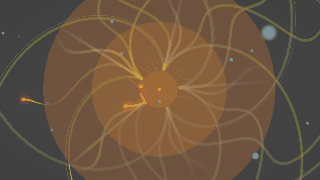 This is a really neat effect, and I’d like to keep it since it fits the fractal and sacred geometry theme of the game. The kicker is that the UI doesn’t really layer on top nicely. I considered having a separate minimalist background for the menus. This sample screenshot looks a little bland, but I did think this made a good case for having a minimalism-inspired menu system.  However, this would separate the game into two visual styles and worsen the cohesion of the game. In other words, I feel I’d need to go fully minimalistic, or fully three-dimensional. Right now, the case is strong for sticking to the 3D feel. The good thing is there is a game out there - Splice - that has a beautiful and similar aesthetic that I can look to for inspiration. I find it maintains a minimalist feeling with two-dimensional gameplay and overlaying UI while looking and feeling very three-dimensional. It’s very cohesive and aesthetically pleasing while suiting the tone of the game. Brilliant! This 3D inspired UI and menu system may be a possible avenue for Seed of Life. The process of finding the “best solution”I’m constantly in a tug of war battle between choosing the “easy solution” and committing to a longer process of finding the “best solution”. It’s never as if the best solution is obvious-but-requires-more-work. The best solution usually comes from exploration and experimentation. The best solution is decided after several solutions have been tested - it is the “best” as proven by a process of science, not because it’s the most elaborate (or because one *think* it’s the best). Sometimes, I feel like just going with a simple solution without exploring for the best one. As my first solo and independently published game, I feel that keeping things simple is the pragmatic choice. However, I’m constantly unsatisfied with the half-baked solutions that come to mind. I feel the game deserves better and that I’m doing both myself and any potential players of the game a huge disservice by not creating something that is the best I can make it. Perhaps that is a good work ethic to have, or perhaps it is an unhealthy one - I could work many hours obsessing over small details that do not matter in the end. I’m not quite sure whether any of this would pay off other than through personal satisfaction, but, for now, I’ll accept that and choose to live and learn. ConclusionI’m going to try and attempt a 3D menu system as inspired by the game Splice. I’m hoping it will work out beautifully, but I can never really know until it’s done. If it works out; great! If not, I’ll likely just roll with my 2nd design pass - unless I discover another solution somehow.
|
|
|
|
|
 Logged
Logged
|
|
|
|
|
@EMOTIONTHEORY
|
 |
« Reply #10 on: September 01, 2016, 08:17:36 PM » |
|
UPDATE 7
Resuming work after a 3-month hiatusAugust 29, 2016 Some updates and things to mentionI have been finishing up some contract work the past few months. Immediately after that, I spent about 2 weeks on a different and larger scoped personal project with a friend. All the while I’ve been playing a ton of Overwatch, and more recently, finishing up the Blood and Wine expansion in The Witcher 3. Now that the contract is finished, my other project in a decent place to lay dormant, and my gaming lust sated; it’s time to get back into Seed of Life. Meanwhile, here are some bits of news worth mentioning: Getting back into things In my last update, I referenced the game Splice as a specific example of what I’m aiming for when it comes to the look and feel of the menus and UI, and that hasn’t changed. Here’s what’s ahead for Seed of Life. My immediate goals- Get the core game loop going
- Splash screens, start screen, mode select, option to quit
- Core modes (I want only one playable for now, which is Challenge)
- Story, Zen, Endless, Challenge
- Refine the menus and UI to fit the new 3d aesthetic
- Create a test executable
My medium term goals- Integrate Analytics
- This is pivotal for testing and collecting data
- Integrate Steamworks
- The game is not exclusive to Steam, but getting this done will get the ball rolling for implementing a platform-independent solution for Achievements, Statistics, and Leaderboards
- Refine the aesthetics, visuals, colours, and audio
- Playtest + iterate (publish alpha version?)
My long term goals- Explore more projectile types and projectile gameplay
- It’s important to look more at sacred geometry, the golden ratio and the golden rectangle, the seed of life and the flower of life, Fibonacci sequences, Phi, Fractals, the Millenium Run/Simulation, and so on.
- Look at nature: flowers, plants, honeycomb, pinecones, cobwebs, galaxies
- Refine all game modes
- Story, Zen, Endless, Challenge
- Finalise the visuals and audio for the game
- Playtest + iterate more (publish early access version?)
My ultimate goalTo create a beautiful looking and sounding game that is fun to play, one that dazzles and surprises its players with the gentle introduction of new mechanics and visuals In terms of a marketable game, one that should garner a high number of positive reviews and maximise buyer satisfaction: - Screenshots to look pretty
- GIFs and videos to look even prettier
- Music to sound appropriately emotive
- Game to instill a strong thematic vibe (math / geometry, philosophy / theology)
- Endless and Challenge modes to feel appropriately fun and challenging
- Story and Zen modes to feel appropriately dazzling and mesmerising
- Game overall to have elements of understanding and epiphany
- ANYONE should be able to pick up and play
- design with simplicity and ease-of-use
- minimise frustration, friction, and negative reinforcement
- maximise communication and positive reinforcement
ConclusionI hope to continue making development posts weekly. I am still trying to ease myself into an efficient working routine, the details of which I’ll touch upon in my next post.
|
|
|
|
|
 Logged
Logged
|
|
|
|
|
@EMOTIONTHEORY
|
 |
« Reply #11 on: September 14, 2016, 04:24:35 PM » |
|
UPDATE 8
Kiwi Game Starter & the New Zealand Game Developer’s Conference (2016)September 15, 2016 Seed of Life was a finalist for the KGS scholarship award!The winners - two wonderful colleagues of mine; Matthew and Cynthia - went on to win the scholarship award with their games Caves and Ten Thousand Coins.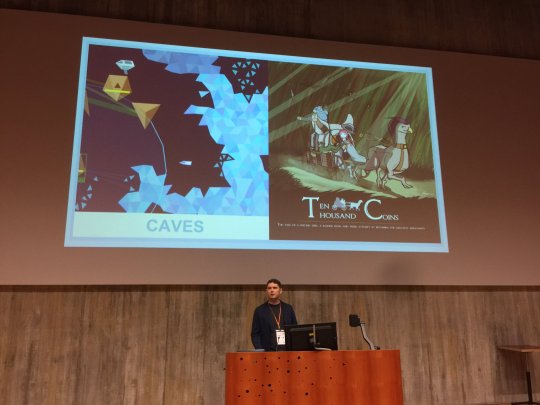 The winners for the funding streams were two other colleagues of mine; the peeps behind Lost Goblin and Team Ninja Thumbs for their games Goblins of Elderstone and Grabity.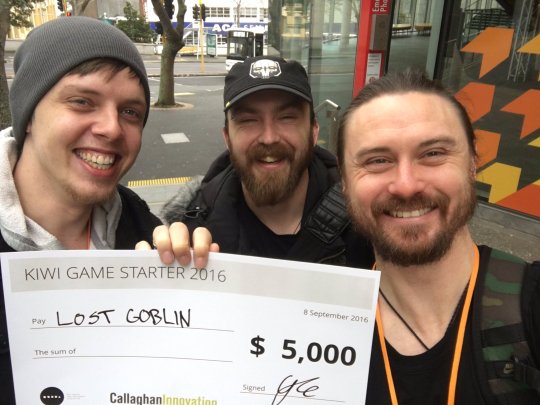 Also, props to one last finalist; the game Interdimensional Llama by Team Llama - a delightful little puzzle game by a lovely student team from Wellington. 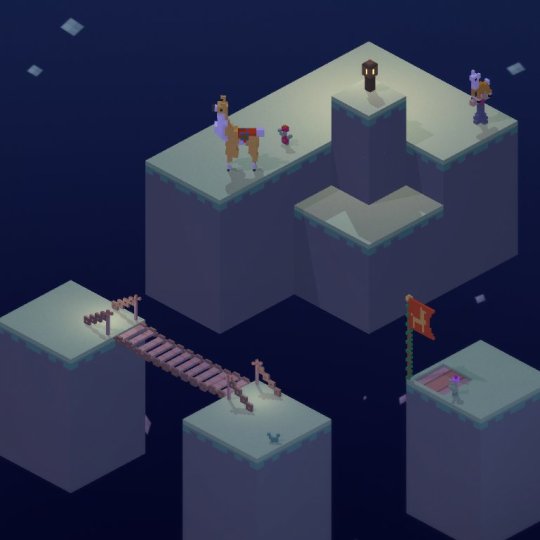 It was a packed week in Auckland! It was a packed week in Auckland! I spoke at #NZGDC16 about editor extensions, game design, and being a one-person indie game dev I spoke at #NZGDC16 about editor extensions, game design, and being a one-person indie game dev The room was packed! (Yikes!) 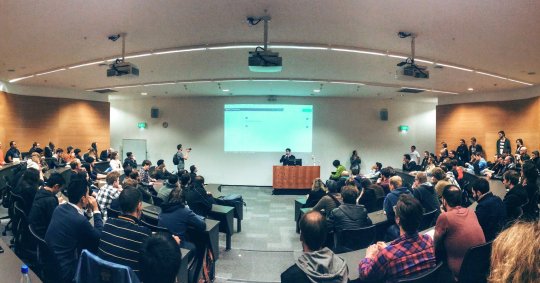 The talk basically glossed over these blog posts (scroll down to “Additional Links”) I had already written while exploring why such decisions were not only helpful but necessary in exploring my game’s possibility space (and making it without taking forever!) I just kind of riffed. It was a very open, self-centered talk about Seed of Life and what I went through to make it (making it, still). What I had hoped to get across was how I discovered something unique with my game concept and how I attempted to explore it - implying that you too should look for what’s special about your game and try to explore it by writing tools that help you do so. I think it went well! Seed of Life was live-streamed during NZGDCHere’s a shot of Cynthia playing the game! (Ooh, that glare on the tv T__T) 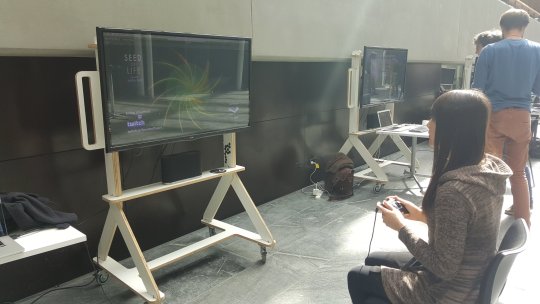 All the while, the game was being streamed live to twitch (here’s my twitch page) with screenshots being posted to my twitter (several screens if you scroll down!) in real time - a large part of what my talk was about. 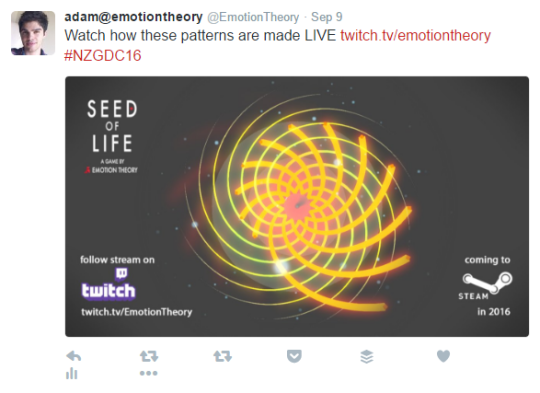 TODO: Archive the videos to YouTube!Conclusion TODO: Archive the videos to YouTube!ConclusionAfter NZGDC, we celebrated into the night. It was here that many memorable and open conversations took place with several endearing people across the ANZ game development scene. I feel that it was here that I got to properly take in what just happened, and it solidified my enthusiasm and excitement for completing and releasing Seed of Life - which is hopefully not all too far away. What a packed, heartwarming, eventful, fruitful, and wonderful week.
|
|
|
|
|
 Logged
Logged
|
|
|
|
|
 Community
Community DevLogs
DevLogs Seed of Life - meditative game about sacred patterns
Seed of Life - meditative game about sacred patterns Community
Community DevLogs
DevLogs Seed of Life - meditative game about sacred patterns
Seed of Life - meditative game about sacred patterns
